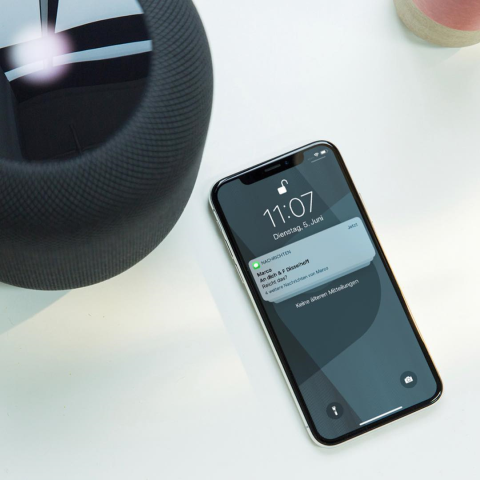

By now, you’ve almost definitely heard of Pokemon Go.
(And, if you haven’t, this must be your first day on the internet or something¦)
Released in July 2016, the augmented reality-based mobile game quickly skyrocketed to the top of the charts on both major app stores – and immediately took the world by storm.
But, before we begin discussing the massive success Pokemon Go (and its developer, Niantic) experienced, let’s back up a bit and talk about exactly what the game is, and how it came to be.
A Brief History of Pokemon Go
How can many companies behind an incredibly successful product or service say that it all started with an April Fools’ joke?
Well¦Niantic can.
See, back in 2014, Satoru Iwata, the late Nintendo CEO, and Tsunekazu Ishihara, President of The Pokemon Company, got together with Google to develop an April Fools’ prank that involved having Pokemon characters pop up on people’s Google Maps throughout the day.
(Can you say “lightbulb”?)
Now, Niantic had previously created a similar augmented reality game, titled Ingress. While playing Ingress, users would need to travel to different physical locations in the real world to progress further in the game.
While Ingress experienced a decent amount of success in its own right – which is how Ishihara got the idea for the April Fools’ prank in the first place – there was definitely more success to be had for Niantic.
Long story short, the team began developing the original “prank” idea into a full-blown, standalone game. Essentially, Niantic used the Google Map data it had used to create Ingress’ “portals” (basically, physical points of interest), and simply revamped the UI to fit the Pokemon motif.
If you really haven’t played Pokemon Go (again¦really?), it basically works like this:
After loading up the app, you’ll be shown a top-down map that matches your physical surroundings. Pokemon characters will pop up on this map, which you can then tap on. This will bring up a mini-game in which you toss a Pokeball at the Pokemon by tapping and dragging your finger toward the Pokemon character on the screen. If you hit it with the ball, you’ll capture it; if not, you can try again (you only get a certain number of tries, though).
There are also “Pokestops” and “Gyms” within the game, which match up with physical landmarks in the real world (such as parks, statues, etc.). When a user approaches these areas, they can unlock an additional mini-game in which they choose from their collection of Pokemon to “battle” with another players’ Pokemon characters. If you win, you capture the “gym”; if not, the other player maintains control of it.
(If this is all confusing, don’t worry – all you need to know is there is a social aspect to the gameplay.)
Throughout this article, we’ll unpack all of this a bit more, and call attention to the important aspects of Pokemon Go’s gameplay – as well as its overall user experience – as it relates to our overall purposes.
Before we do that, though, let’s talk about how successful Pokemon Go has been over the years.
Pokemon Go: An Instant Success
After a period of beta testing, Pokemon Go was officially released to the public on July 6, 2016.
By July 12 (read: less than one week later), the app had an astounding 21 million active users – enough to bring it to the top of Apple’s App Store in the “Top Grossing” and “Free” list of downloadable games.
(Note: We probably should have mentioned that the game operates as a freemium product: it’s free to download and play, but users are required to spend money in order to unlock additional and advanced features.)
Immediate revenues for Niantic were, in a word, insane. By the end of July, Pokemon Go had generated $160m from in-app purchases. A few days later – right around the one-month mark – Niantic reported $268m in revenue from the US, British, and German markets alone.
(Source / Caption: That first month was a doozy¦)
Flash forward to June 2017, and Niantic has earned over $1.2 billion from in-app purchases alone.
With regard to retention, Pokemon Go was still seeing about 5m daily active users in April of 2017, and 65m monthly active users in June 2017 – a little less than one year after launch.
Now, there’s no shortage of articles and editorials on the web discussing the apparent “falling off” of Pokemon Go. If by “falling off,” we mean the game is no longer trending among, well, pretty much everyone, then yes: interest in the game has certainly waned.
However, the reason this drop off was so apparent is because of the ridiculously high numbers the game saw in the first place. Case in point, Niantic saw fifty times the amount of downloads it anticipated almost immediately.
(Source / Caption: The surge caused major issues for Niantic’s servers, but that’s a whole different story.)
In other words, the number of people downloading the app for the first time was bound to fall off after the initial surge:
(Source)
Additionally, despite reports that Pokemon Go’s daily active user numbers were plummeting, the initial week-over-week decrease in user base was, essentially, nothing out of the ordinary. In other words, Niantic experienced the same rate of drop-off as other successful apps like Candy Crush and Clash of Clans; it just looked worse because the initial numbers were so high in the first place.
And, of course, it’s certainly worth pointing out that, even if Niantic never makes another penny off of Pokemon Go, the revenues it’s already generated are nothing to scoff at. Clearly, the game has been a huge success.








